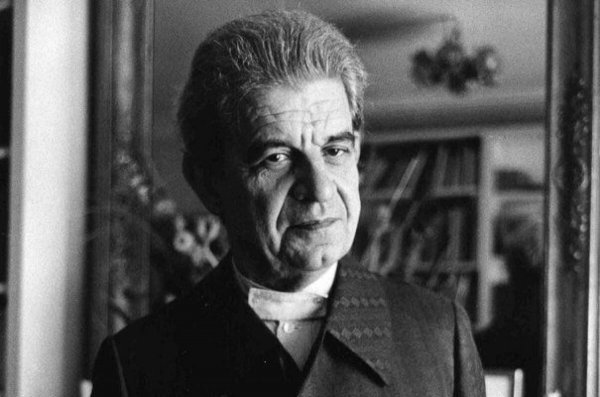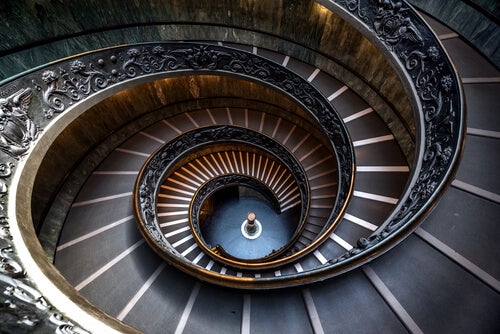Lacan's Theory of the Objet Petit A

When people think about psychoanalysis, their thoughts most frequently turn to Sigmund Freud, the father of this discipline. However, several authors continued his legacy. One of them was Jacques Lacan, recognized by theories such as the objet petit a, which is sometimes called the object cause of desire.
It’s somewhat difficult to translate into English as Lacan himself preferred that the “a” remained as an algebraic symbol and wasn’t translated.
Besides developing this theory, and pointing out the main characteristics of this “object”, we’ll also look at some related points within the framework of the author’s thinking.

Who was Jacques Lacan?
This man was a French psychoanalyst who introduced innovative elements to psychoanalysis. He studied medicine and later specialized in psychiatry. In addition, in 1938, he began his analysis, an essential process for every psychoanalyst.
Lacan is best-known for his first essay on the concept of the mirror stage. Regarding this and other works, the author recognized that his theories originated in Freud’s theories. Then, he gradually incorporated elements from other disciplines, such as:
- Linguistics
- Philosophy
- Mathematics
On the other hand, he was also very active in the world of art. He had a good relationship with Luis Buñuel, Salvador Dalí, Pablo Picasso, and André Breton. In addition to that, he was also interested in surrealism, was present at the public reading of James Joyce’s Ulysses, and enjoyed the works of Heidegger and Hegel.
At that time, his approach to psychoanalysis gave us another perspective on the relationship between art, the unconscious, and the void. This was, above all, because he considered that post-Freudians had misinterpreted Freud’s work. Because of that, he expanded it using new notions and applications.
He attached so much importance to this issue that it cost him his participation in the International Psychoanalytical Association after he sent them his ideas. However, he was able to found the French Psychoanalytic Association and he created his own school in Paris.
Objet petit a: what is it?
Objet petit a is a development of the concept of the object in psychoanalytic theory. It arises from the need to specify the original object of psychoanalytic theory. Lacan took Freud’s “lost object of desire” as a reference. He also took into account Donald Winnicott’s “transitional object” and Melanie Klein’s “partial object”.
Thus, Lacan was in tune with the Freudian hypothesis that refers to the “lost object of desire” as something that’s incessantly searched for and never found. It’s an unfulfilled asymptotic desire by definition, but one that allows the individual to learn by being in touch with reality.
At first, Lacan’s objet petit a consists of a person’s lack of desire to have something fulfilled, because whenever the object of desire is fulfilled, then the person turns to another object of desire. Although this concept went beyond this, the object a basically refers to the initial letter of autre, which means “other” or “another” in French, and was intended to refer to “another” or “the other” object of desire.
Lacan used the letter a as a logical value, based on algebra. It’s a concept that he used to ascribe a metaphor to the idea of loss. He viewed the person experiencing a mix of their desire, their “other” desire, joy, love, and anguish. For this reason, it’s difficult for the person to let go, as they’ll have to pay the price of their loss.
Thus, we aren’t referring to something that you’ve lost, but rather the constant feeling that something’s missing in your life. In other words, the objet petit a would be a way of covering over whatever’s missing from your life.

The characteristics of objet petit a
The objet petit a has been given different names by Lacan himself: extimo, libra de carne, foolish, the aleph of anguish, or loathsome. He used these names to try to explain what this and his other theories are about. Let’s see what concepts the objet petit a is related to:
- Joy. The objet petit a is in solidarity with the function of joy and with the cause of desire. In fact, it answers the question: how does a person gain enjoyment? They gain it by satisfying the desire. On the one hand, it’s pleasure, but it’s also intermingled with suffering. It’s what happens beyond the principle of pleasure.
- Anguish. Lacan says that it appears when there’s an absence of loss. The objet petit a is related to it because this is what’s going to create its reality.
- Absence/lack. Here, the objet petit a would be a kind of image that reveals a little bit about what the person is truly lacking. It’s a type of window that reveals what’s lacking in their life.
- Fantasy. This refers to both fantasy and other things that oppose reality. It has a symbolic, digressive, and significant structure. This is related to objet petit a because the person can make an attempt to attain it in order to reposition themselves.
Lacanian theory
Now, Lacanian theory is so broad and convoluted that you’ll need time to think about it and understand it. This is mainly because of the language it uses and the concepts it inherits from structuralism and mathematics. To get a greater understanding, we recommend that you first explore Freud’s theories. After that, you should go through each of Lacan’s ideas step by step, because they’re all interconnected.
In short, object a is a Lacanian “invention” based on, or influenced by, the thoughts and theories of Freud and his contemporaries. It’s an object that points to the unattainable; a surplus of joy that relates to anguish, lack, fantasy, desire, and our “other” desires. In other words, it’s the object of the cause of desire or the window that shows its absence.
All cited sources were thoroughly reviewed by our team to ensure their quality, reliability, currency, and validity. The bibliography of this article was considered reliable and of academic or scientific accuracy.
Lacan, J. (1956/1996). El seminario. Libro 4. La relación de objeto, Buenos Aires: Paidós.
Lacan, J. (1966/1975). El objeto del psicoanálisis.
This text is provided for informational purposes only and does not replace consultation with a professional. If in doubt, consult your specialist.








